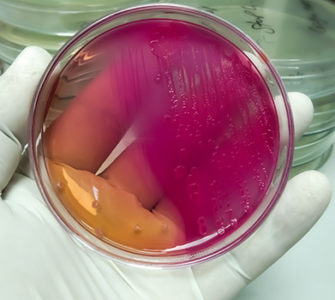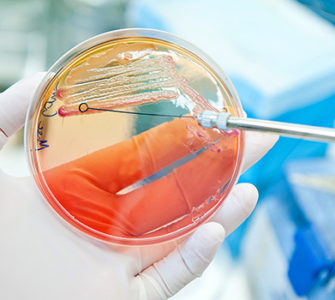Live-vaccine program a ‘must have’ to deal with cage-free E. coli challenge
A higher risk of bacterial challenges in cage-free egg production means a live-vaccine program against Escherichia coli is a “must-have minimum” for flocks reared in alternative systems, according to a poultry health expert.
Dan Wilson, DVM, of Wilson Veterinary Company, Indiana, said the shift to cage-free production has seen E. coli surge to the top of the bacterial-challenge list thanks to birds in those systems being exposed to greater levels of bacteria.
As a result, producers should plan a program of live vaccination and carry out regular diagnostics to understand their farm’s disease status and reduce the risk of bacterial causes of mortality, he said.
“In the past in cage production, there was a little bit less pressure on the birds as far as a need for E. coli vaccination…even though we’ve stressed how important even a basic live program can be to minimizing E. coli challenges and in lay,” Wilson told Poultry Health Today. “But now, in alternative styles of production, it’s almost a must-have minimum to have a live program — typically multiple doses of a live program. In some cases, that would include reboosting the E. coli live vaccine in lay.”
As more producers adopt alternative production systems, Wilson said live vaccines are also being paired with autogenous vaccination with killed products to gain multiple directions of prevention in lay.
Vaccination timing
When it comes to administering vaccinations, Wilson said managers should select a time when its convenient or most reliable to get the vaccine to the birds.
“In floor production or aviary production, the earlier we vaccinate them in pullet states, the more access we have to the birds to get a good spray or water vaccination,” he said. “So that plays a major factor in when we actually choose the timing of the live vaccinations.”
Timing is also dependent on whether the pullet farm has E. coli challenges or whether vaccination is purely for prevention on the layer side, he added.
“If it’s mostly for prevention on the layer side, we try to do the live vaccinations as close to lay as possible,” Wilson said.
Gaining protection through the early parts of lay is critical because birds are navigating stressful events like a new environment, nutritional changes and coming into egg production, “so definitely try to target live vaccinations later in the pullet program for layer farms,” he noted.
Regular diagnostics
To understand the best course of management, Wilson said regular necropsies are also helpful to know what serotypes a flock is dealing with.
“With more modern diagnostics outside of just basic culture, we’re doing a lot more with actually sequencing isolates and comparing them within and to other farms, and finding vaccine programs that match well with that,” he said.
In alternative production, it’s also important to remember that not all bacterial causes are E. coli alone, he added. Discovery and verification that it is E. coli and not something else are vital.
Beyond that, comparing isolates within and between farms can help determine vaccine decisions, or at least inform the producer that a vaccine change or addition would have a good return on investment in terms of profitability and welfare of the flock, Wilson said.
Posted on October 10, 2022

















